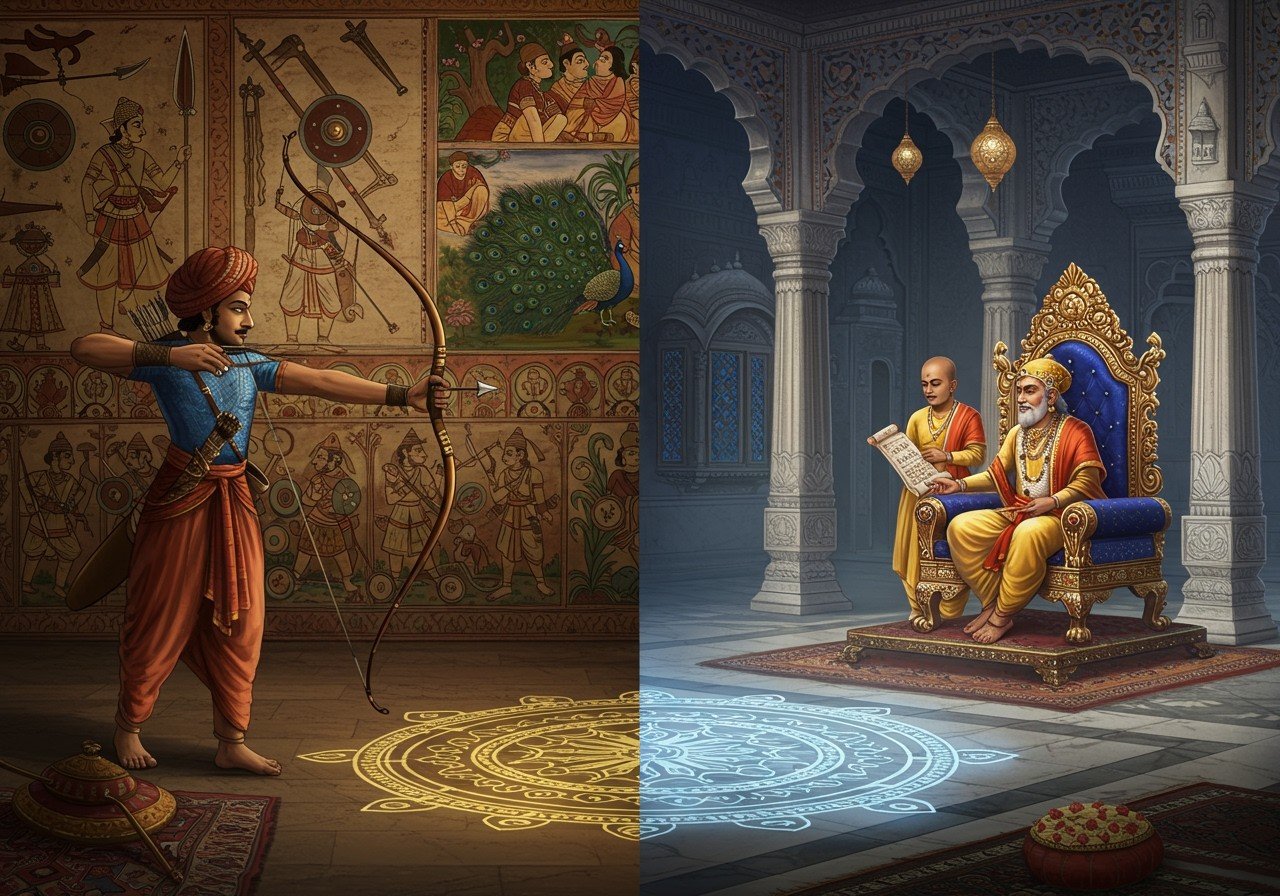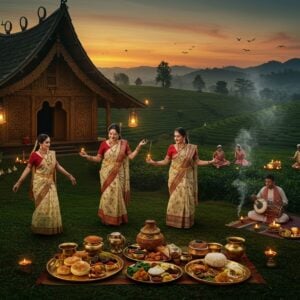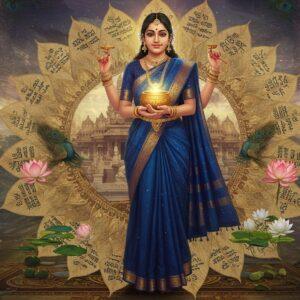
Ancient India’s history is a vibrant tapestry woven with threads of warfare and politics. These two elements were deeply intertwined, with war serving as a tool for territorial expansion, asserting dominance, and establishing political order. From the Vedic period to the rise and fall of empires, conflict shaped the subcontinent’s destiny. Let’s explore this fascinating era, where dharma and strategy met on the battlefield.
The Political Landscape: A Stage for Power Plays
Imagine a land dotted with numerous kingdoms, republics, and empires, each vying for supremacy. This fragmented political landscape was the stage for constant power struggles. The rise of Magadha, with ambitious rulers like Bimbisara and Ajatashatru, exemplifies the era’s political dynamism. These rulers employed aggressive expansionist policies, setting the stage for future empires.
- Fragmented Polities: Ancient India wasn’t a unified entity. Instead, numerous kingdoms, republics, and empires constantly competed for power and resources. These conflicts significantly influenced political strategies and military advancements.
- The Rise of Magadha: The kingdom of Magadha’s rise to prominence showcases the era’s political environment. Rulers like Bimbisara and Ajatashatru adopted aggressive expansionist policies, setting a precedent for future empires. Their strategic acumen and military prowess helped them carve out a powerful kingdom.
- The Mauryan Empire: Under Chandragupta Maurya, guided by the wisdom of Kautilya, much of the Indian subcontinent was unified. This achievement relied heavily on warfare and strategic alliances. Emperor Ashoka, initially a warrior-king, later embraced Buddhism and championed peace, marking a significant shift in political philosophy.
- War as a Political Tool: Ancient Indian thinkers didn’t shy away from discussing war. They recognized it as an inherent aspect of politics. Kautilya’s Arthashastra provides a detailed analysis of war and statecraft, offering valuable insights into the political thought of the time.
- Covert Operations: Ancient Indian warfare wasn’t just about open battles. Emphasis was placed on covert operations, including psychological warfare, sowing discord among enemies, conspiracies, and even assassinations. These strategies, known as *gudayuddha* (clandestine war) and *kutayuddha* (concealed war), were considered essential tools in the political game.
Want to delve deeper into the intricacies of Dharma? Check out our insightful blog post on Dharma in the Ramayana.
Military Organization and Strategy: The Art of War
Ancient Indian military organization was sophisticated. The traditional army, known as chaturanga, consisted of four main divisions: infantry, cavalry, chariots, and elephants. Commanders skillfully deployed these forces in various formations called vyuhas, adapting their strategies based on the terrain and the enemy’s strengths.
Forts played a crucial role, providing refuge for the populace and serving as strategic strongholds. While land battles dominated, naval warfare was also practiced for conquering islands and engaging with maritime powers.
- The Four Arms of the Army (Chaturanga): The ancient Indian army was a well-structured force, comprising infantry, cavalry, chariots, and elephants. Commanders deployed these divisions in formations known as vyuhas, adapting their strategies to the specific terrain and enemy composition.
- The Importance of Forts: Fortifications played a vital role in ancient Indian warfare. They served as defensive structures, protecting the population and providing strategic advantages during conflicts. Many forts were designed to withstand lengthy sieges.
- Naval Warfare: While land battles were more common, naval warfare was also a significant aspect of ancient Indian military power. It was essential for controlling coastal regions, conquering islands, and engaging with seafaring communities.
- War Elephants: Elephants were a unique and powerful element in ancient Indian armies. They were used to break enemy formations, create panic, and instill fear in the hearts of opponents. The sheer size and strength of these animals gave them a distinct advantage on the battlefield.
- Chariots: Chariots were highly prized for their mobility on the battlefield. They served as command vehicles, transported archers, and could be used to disrupt enemy formations. Their speed and maneuverability made them valuable assets.
- Infantry Limitations: Unlike the tightly packed formations of Greek or Macedonian phalanxes, the Indian infantry was more dispersed. While this provided flexibility, it also made them more vulnerable to focused attacks.
- Vyuhas (Military Formations): Vyuhas were complex military formations designed to maximize an army’s strengths while exploiting the enemy’s weaknesses. These intricate formations played a key role in achieving victory on the battlefield.
Ethical and Religious Considerations: Dharma in Warfare
Warfare in ancient India wasn’t devoid of ethical considerations. The concept of dharma yuddha, or “just war,” was central to Hindu philosophy. This principle emphasized righteous conduct in battle, advocating war only for justifiable causes such as defending one’s kingdom or avenging injustice. Even Buddhism and Jainism, despite their emphasis on non-violence, acknowledged the role of war in defense and the protection of dharma.
For a deeper understanding of Hindu scriptures, explore our comprehensive guide on Hindu Scriptures.
Evolution and Foreign Influences: Adapting to Change
Ancient Indian military practices constantly evolved, incorporating technological advancements in weaponry and tactics. The introduction of iron-based tools and the development of siege technology significantly impacted warfare. Interactions with foreign empires, including those of Greece, Persia, and Central Asia, introduced new military techniques and fortifications, which were adapted and integrated into Indian warfare strategies.
Explore the principles of ancient Indian architecture and their relevance to modern living in our insightful blog on Vastu Shastra.
Connecting with Tradition through Poojn.in
At Poojn.in, we understand the deep significance of connecting with our rich cultural heritage. We offer a wide selection of authentic puja items that resonate with the spirit of ancient Indian traditions. Whether you’re seeking sacred conch shells (Shankh), pure copper vessels, brass items, or ritual lamps (diyas), our collection is curated to enhance your spiritual practices and connect you with the wisdom of our ancestors.
Explore our range of Pooja Ghars and Sindoor, carefully crafted to honor tradition.
FAQs
What was the Chaturanga in ancient Indian warfare? The Chaturanga was the four-fold division of the army, consisting of infantry, cavalry, chariots, and elephants. This structure provided a balanced and versatile force, capable of adapting to diverse battlefield conditions.
What role did forts play in ancient India? Forts served as vital defensive structures, offering protection to the population and providing strategic advantages during times of war. They also served as symbols of power and authority.
What is Dharma Yuddha? Dharma Yuddha refers to the concept of “just war” in Hindu philosophy. It emphasizes righteous conduct in warfare, advocating for war only when justified by ethical principles.
How did foreign influences impact ancient Indian warfare? Interactions with Greek, Persian, and Central Asian empires introduced new military technologies, tactics, and fortifications, enriching and diversifying Indian warfare strategies.
Where can I find authentic puja items related to ancient Indian traditions? Poojn.in offers a wide selection of authentic puja items, crafted to honor tradition and enhance your spiritual practice. Visit our website to explore our collection.
Conclusion: A Legacy of Wisdom
The interplay of warfare and politics in ancient India shaped the subcontinent’s destiny. From the rise of Magadha to the Mauryan Empire, the era showcases a complex interplay of strategy, ambition, and dharma. The wisdom of ancient texts like the Arthashastra continues to inspire modern political and military thought. As we delve into this rich history, we uncover a legacy of strategic brilliance and ethical considerations that resonate even today. By understanding the past, we gain valuable insights for navigating the present and shaping the future.
Discover a world of timeless traditions at Poojn.in – your one-stop shop for authentic Indian cultural and religious products.


